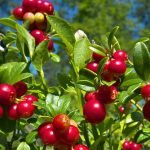Let me apologize in advance. This is supposed to be primarily a Barron Report, but the last several newsletter issues have ended up being very political in nature – dealing with your rights to obtain the herbs and supplements you need to take back control of your own health. Amazingly, even when you try and step away from it, you you find yourself right back in the thick of it. As it turns out, it’s impossible to talk about the blood cleansing formula without being forced to deal with the same political nonsense — yet again.
Blood Cleanser
First of all, the very name “blood cleanser” is a euphemism. In fact, this formula and every herb in it is anti-c***er. (You can fill in the blanks for yourself.) Variations of this formula have been used for hundreds of years by native American tribes. More recently versions have surfaced as the Hoxey formula and Essiac Tea and Jason Winters Tea, etc. The very fact that we can’t talk openly about the anti-cancer property of herbs and herbal formulas is probably the most political topic in alternative health today. (Listen to my talk on Cancer, The Big Lie, to get a better understanding of this issue.)
But as we go through the individual herbs in my favorite version of this formula…
Chaparral, Red clover, Burdock root, Poke root, Yellow dock root, Goldenseal root, Oregon grape root, Bloodroot, Mistletoe, Periwinkle flowers, Lobelia seeds, Sheep sorrel, and Cayenne
…you will find that almost half of them are on the FDA hit list, and virtually all of them are on the Canadian hit list. And you will find numbers of these herbs on the hit lists of European countries such as Switzerland and Germany.
What’s going on here? Why is it that the very same herbs that the great herbalists single out as being most beneficial are banned by governmental authorities as useless and even toxic? How does this happen – again and again? (Of course, these same authorities might have more credibility if the alternative they were pushing, prescription drugs, wasn’t killing several million people worldwide every year.)
Let’s discuss several of the herbs in the formula I detailed above and see why I recommended them. In this issue of the newsletter, we only have room to discuss one – chaparral.
Chaparral
As I’ve already mentioned, native Americans have used Chaparral for centuries as an anti-cancer remedy. Exactly how it works is open to debate, but some of its main actions are:
- Chaparral is one of the most powerful anti-oxidants in nature. The primary biochemical responsible for this is NDGA (nordihydroguaiaretic acid) – so effective, it is often used as a food preservative
- Chaparral cleanses the lymph system
- It cleanses the blood
- It cleanses the liver
- It cleanses the urinary tract
- It’s a natural chelator that clears heavy metals from the blood
- It is anti-pathogenic. In other words it drives microbes and parasites from the body. Chaparral has even shown much promise with herpes.
- Studies show that chaparral may also inhibit cell proliferation as well as DNA synthesis.
- University tests have indicated that chaparral can destroy and dissolve many types of tumors.
So how could such a beneficial herb be on every government’s blacklist?
According to the FDA, “Chaparral: sold as teas and pills to fight cancer and “purify blood,” has been linked to serious liver damage. FDA has recorded two deaths and 10 cases of hepatitis or other liver abnormalities in users.”
The reality, though, is that the evidence for chaparral liver toxicity is anecdotal. It is not the result of any double blind studies or of any clinical trials. For example, one of the cases the FDA likes to single out can be found in the Journal of the American Medical Association (273 (6):489). The details of the case concern a 60-year-old woman who developed jaundice and liver failure while taking one to two capsules of chaparral each day with a pinch of garlic in a tea made from nettle and chickweed. The authors of the JAMA article concluded it was the chaparral that caused the liver problems. What is fascinating is that the patient in question was also consuming atenolol, aspirin, was on a nitro patch, and occasional acetominophen, as well as diltiazem hydrochloride – all drugs with profound hepatoxic potential. Amazingly, none of these other substances was even considered as a possible cause of the liver problems by the authors…or the FDA. What a surprise!
Nevertheless (and despite the fact that extensive studies on chaparral in the 1970s and 1980s were unable to find any hepatotoxic properties), in December of 1992, FDA Commissioner David Kessler announced, “The public should not purchase or consume chaparral,”
Chaparral Toxicity
After these allegations of liver toxicity by the FDA, manufacturers voluntarily restricted sales of chaparral for several years until the reports were investigated. Following a lengthy review, a panel of medical experts concluded “no clinical data was found… to indicate chaparral is inherently a hepatic toxin.” In late 1994, this report was submitted to the FDA and chaparral was subsequently given a clean bill of health by the American Herbal Products Association (AHPA). After comparing the quantity of chaparral consumed each year (it is estimated that over 200 tons, 500 million capsules, has been sold in the U.S. in the last two decades alone) to the number of product complaints, industry regulators concluded that chaparral did not pose a significant threat to consumer safety. (Dr. Clark Watt and a group of scientists and doctors concluded that hepatoxicity was most likely due to an allergic reaction rather than “inherent liver toxicity.”)
So is this remarkable herb, the cornerstone of many great anti c***er formulas, now sold freely in the marketplace and used to benefit ailing people all over the world? Hardly!
Search for “chaparral toxicity” on the web and you will see numerous articles still announcing the dangers of the herb (all citing the same cases from the early 90’s.) Or try and buy chaparral in Canada or much of Europe. Right! The problem is that once an herb is labeled dangerous (even if disproved at a later date), the stigma remains – and is brought up over and over and over again…acquiring truth through repetition, if not fact.
Fortunately, despite the bad press, chaparral is at least available (for the time being) in the United States.
Well, so much for chaparral. We’ll talk about some of the other herbs in the blood cleansing formula in the next issue.
Interested in a full-body detox?
Utilize our Self-Guided Detox Program!
Read more about Blood Cleansing and Detoxification
Or visit our Natural Detox Program











hi. i would like to now if
hi. i would like to now if you have the liver detox and tincture already formulated. on chelfs of health stores. tea bags tinc drops ? i would like to use this cleansing diet in my detox business.?
The most trusted source for
The most trusted source for Jon Barron formulas is at http://www.baselinenutritionals.com. Others have tried to duplicate his formulas, but never use meaningful amounts of each ingredient to actually have any benefit.
I nearly ordered Jason
I nearly ordered Jason Winters tea, here in Thailand, but noticed chaparral is no longer in the formula. I now ‘treat’ a friend with multiple terminal malignancies with home-made nano colloidal silver, papaya leaf and eucalyptus leaf, stem and bark tea, and montana yew tip extract. The ‘patient’ is a bit doozy from 10 shots of brain radiation, (plus enough chemo to sink the Titanic), so won’t take her natural C 3gms daily and handful of peanuts for organic germanium and organic selenium to pump up her white blood cells, because she gets a bit of nausea, even though we countered with bicarb! (Clark H R, PhD ND).
Let’s see how it goes,
Thank you so much for sharing
Thank you so much for sharing. I was very suspicious of those articles myself. It’s good to hear more about it. The truth can be so easily twisted when that is the desire.